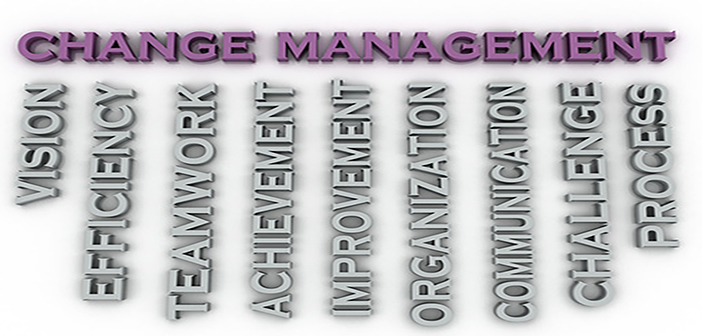If you agree that Change is the new normal – globalization, political unrest, business disruption, climate change, etc.) then having the capability to manage change is critical. Never ending change impacts business leaders and employees alike and can either provide momentum to a business or bring it to its knees. Here is our definition of Change Management:
Change management is an organized, systematic application of the knowledge, tools and resources of change that provides organizations with a key process to achieve their business results. Effective change management must bring the organizational and people sides of change together in order to increase the speed of implementation and thereby insure the realization of business benefits.
To interpret the above, Change is all about people AND believe it or not managing change has a direct impact on business results and the realization of business benefits. According to an article I recently read “All Change Please”, “CEOs and CFOs that embrace this concept are adapting more successfully to change and improving the “hard” benefit of their EBITDA. They understand that getting the people side right is far more powerful than the traditional process-driven change management approach.” I could not agree more. This article references a study conducted at IBM back in 2008. “The study interviewed 1,500 leaders and managers and when asked “What makes change successful?” the top answers all focused around the so-called “soft factors” (I despise that term 😡 ): leadership sponsorship (92%), employee involvement (72%), honest and timely communication (70%), and cultures that motivate and promote change (65%).” Even though this study is somewhat dated, the top answers are not only right on target but are more important than ever.
There are numerous change management processes out there (about as many as Sourcing processes) and they are ALL basically the same. Having been a huge advocate and leader of change for more time than I care to remember, it continues to frustrate me when business leaders do NOT recognize the “value” of leading and managing change. It is still often referred to as a “soft skill” BUT without it our business processes and technology would NOT produce the benefits they promise.
Having the ability to lead and manage change is the most critical skill set required today in any business setting. When change is introduced in the form of a transformation, new initiative, innovation, new product, new market, new leadership, technology update, etc. and is unsuccessful it is usually because not enough attention was paid to the people side of the change. Change causes FUD (fear, uncertainty and doubt) and MUST be dealt with. As I look at the results of the 2008 study, I would tell you NOT to even start a major change initiative unless you have executive sponsorship, employee involvement, communication /communication / communication/ (and one more for good luck) communication and a culture that motivates and promotes change. EVERY client we work with will grumble about our insistence to focus on the people side of change management AND EVERY client will thank us later and attest to it as the key to their success. Leading change, by the way, can be taught and we at the Mpower Group are quite good at it. Let us know if you are interested in hearing more.
If you are reading this and nodding your head because you have suffered through the pain of focusing on the process and not the people during a change OR ignoring the emotional impact of change at all, please share your story with us so that we can all learn from each other.
Join in the conversation and let us know what you think. . . . . . . . .


1 Comment
Pingback: 20 Years Later....It’s STILL All About Change Management - News You Can Use